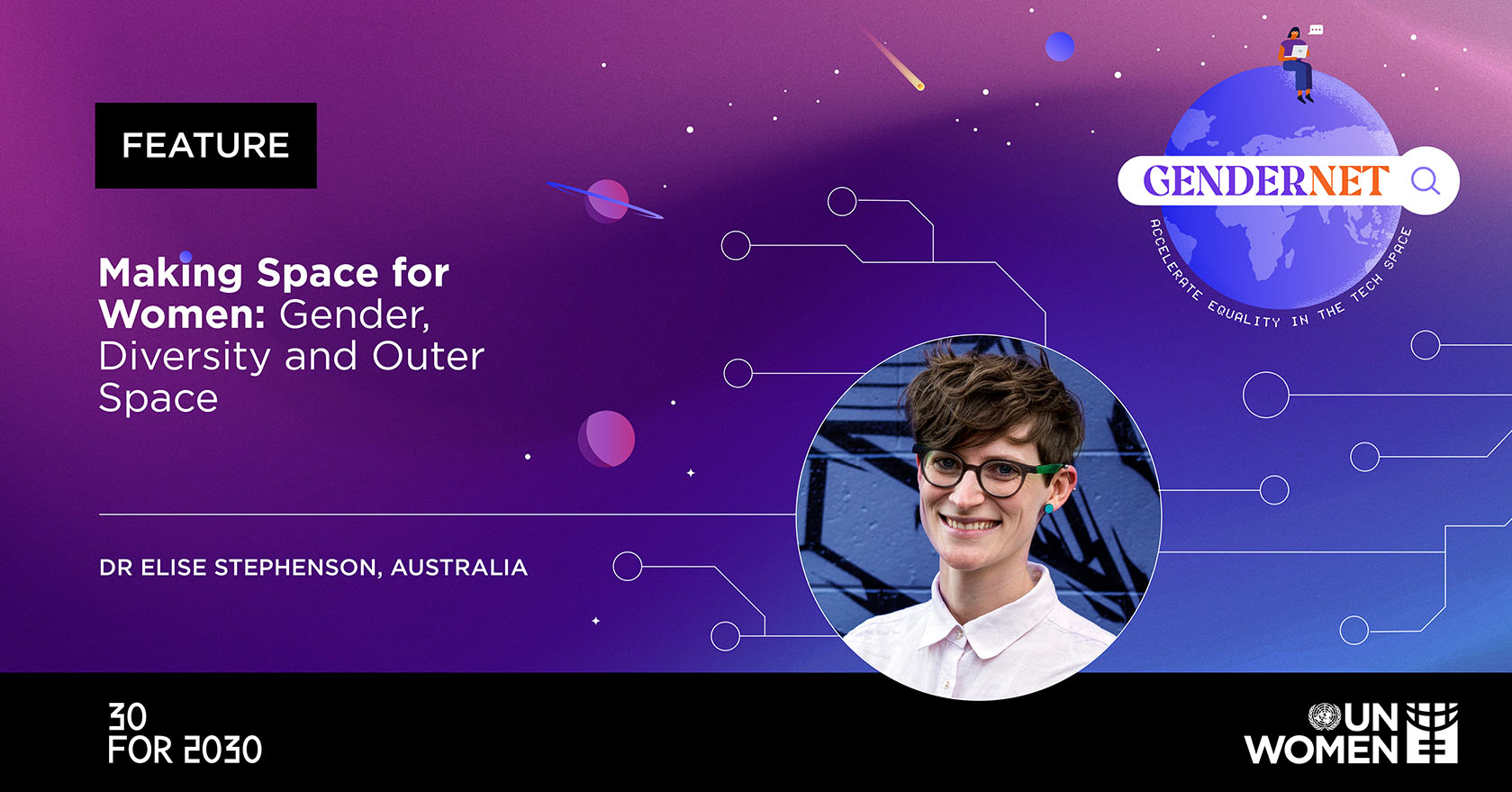This article is part of the GenderNet Campaign, supported by the Changemakers Project: Youth, Technology and Innovation to End Violence Against Women and Girls in Asia and the Pacific (2021-2023) with the generous fund from the Government of the Republic of Korea, through the Ministry of Gender Equality and Family.
Making space for women: Gender, diversity and outer space
Date:
Author: Elise Stephenson, PhD. 30 for 2030 Network Member

Space exploration is an area of human endeavour that came of age during the entrenchment of gender equality, at least as an aspirational norm, along with wider civil rights movements. The US’s NASA and Russia’s Roscosmos were only founded in the 1950s, whilst across the world, over 70 other space agencies have been established during the growing ‘age of equality’. At no other point in history have we had the same leverage over new institutions to normalise and mandate gender equality and women’s leadership from the start. The precedent we set now matters for the entrenchment of equality, justice, and fairness as cornerstones of the space sector.
Currently, we are not standing in a place of space equality though. Major gender gaps exist everywhere from the space agencies themselves to space manufacturing, aerospace engineering, space force and space command workforces, the space industry, and women’s leadership across it all. The Philippines, United Kingdom and Ukraine space agencies are an exception to this chronic under-representation. Yet, Ukraine is still operating in a warzone, and pockets of progress and equality remain sporadic, with women representing on average only 20 per cent of the international space industry, and women more likely to be employed in administrative and project management roles than operations and leadership.
Beyond representation, the gaps and opportunities in space are significant and span procurement and industry practices, mission and uniform design, and policy, as well as language in the form of gender-specific terminology.
Currently, less than 1 per cent of total global procurement goes to women-owned businesses. Whilst we do not have statistics on this proportion for the space sector, we can guess that it would be similarly low, given the prevalence of male-dominated ‘prime’ companies, low representation of women in science and technology, and chronic underfunding of women’s entrepreneurship. Yet, procurement is a potential strong lever to impact women’s financial equality in the space sector – if grasped.
Language also matters. The use of phrases such as ”for all mankind” and “colonising space/mars/the moon” is significant. The use of gendered and colonial language contributes to mythology, narrative, laws, media, and debate centred around “men and mankind” and the exploitation of people and resources, which is problematic for greater inclusion, diversity, equality, and access in space. Language shapes reality by giving humans common concepts to understand each other, and so the perpetuation of gendered, colonial and otherwise problematic language entrenches space as exclusionary. If we only speak of space for all mankind, where does that leave women?
Space technology, resources and infrastructure also matter. On 25 March 2019, NASA announced it would launch the first all-female spacewalk of two women at the International Space Station. Yet, days after the announcement was made, the spacewalk was cancelled – NASA did not have two spacesuits that would fit the women. Other aspects of the space programme have also highlighted massive gaps in both understanding and data - from (almost) sending astronaut Sally Ride on a one-week space flight with 100 tampons, to data gaps around space’s impact on women’s bodies, with most health studies focused on white men’s bodies.
Finally, early evidence shows government commitments to gender equality are not consistently applied to space portfolios. There is an urgent need to ‘join the dots’ and demonstrate the relevance of current gender and diversity policies in the space sector, space industry, space security, and responsible governance of space.
We are at a critical juncture. Given research indicates that younger institutions may be better able to achieve and engrain gender and other forms of equality than reforming old, deeply established institutions. The decisions we make around space and gender matter: who goes to space; who decides and negotiates key space agreements, whether and how we use space for resources; how space junk is managed and by whom; who get invested in and who does not; and the second-and third-order effects and opportunities for women. Our need to innovate and think creatively about new and existing space engagement necessitates that women are equal from here on out.
Ensuring that our technological progress does not outpace our social values sets a major and important precedent in space. Whilst so much is still uncertain as to the direction and depth of human endeavours in space, we do know that inequalities tend to be systemic, institutionalized, and built up incrementally.
Therefore, entrenching gender equality and women’s leadership in space matters from the start.